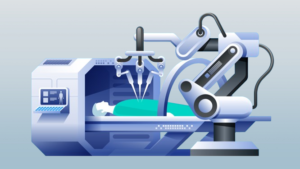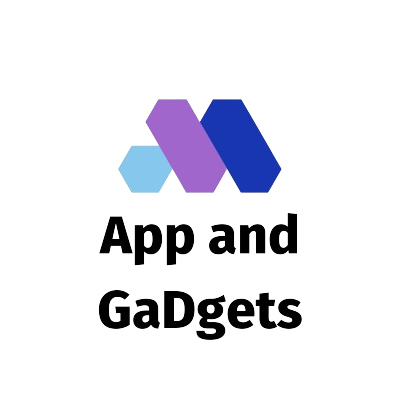The effect of innovation on medical care is evident, reforming how we approach clinical therapy and patient consideration. In this quickly advancing scene, rising advancements are changing the medical care industry, offering custom programming arrangements customized to the special requirements of medical care suppliers. From notable advancements to genuine contextual analyses like Odoo ERP Reconciliation, this article dives into the most recent bits of knowledge and patterns forming innovation in medical care.

Changing Medical care
Arising advancements are playing a critical part in reforming medical care across the globe. These advances envelop a great many developments, each with the possibility to fundamentally influence patient results, smooth out medical services tasks, and work on, by and large, the nature of care. Let’s take a look at a few of the most important new technologies transforming the healthcare industry:
Man-made consciousness (simulated intelligence) and AI (ML):
Medical imaging analysis, predictive analytics, personalized treatment plans, and virtual health assistants are just a few of the many uses for AI and ML algorithms in healthcare. These advances empower medical services suppliers to settle on information-driven choices, upgrade indicative precision, and improve therapy procedures in light of individual patient information.
Telemedicine and Far-off Quiet Checking:
Telemedicine stages and far-off persistent checking gadgets have become prevalent, particularly considering the Coronavirus pandemic. These advances permit medical services experts to lead virtual meetings, screen patients’ important bodily functions from a distance, and give ceaseless consideration without the requirement for in-person visits. In addition to increasing patient convenience and lowering healthcare costs, telemedicine has made healthcare services more accessible.
The technology of the Blockchain:
Blockchain innovation is being investigated in medical care for its capability to get electronic well-being records (EHRs), smooth out information interoperability among medical services frameworks, and guarantee patient security and information honesty. Utilizing blockchain, healthcare providers can enhance data security, facilitate secure patient information sharing across healthcare networks, and enhance care coordination.
Web of Clinical Things (IoMT):
The IoMT alludes to the interconnected organization of clinical gadgets, wearables, and sensors that gather and communicate patient information continuously. These gadgets empower consistent observation of patients’ well-being measurements, early recognition of medical problems, and proactive intercession by medical care suppliers. Smart wearables that monitor fitness metrics and implantable medical devices that monitor chronic conditions are examples of IoMT devices.
Genomics and Accuracy Medication:
Propels in genomics and accuracy medication have prompted customized treatment approaches custom-made to a person’s hereditary cosmetics, way of life variables, and sickness qualities. Technologies for genomic sequencing make it possible for medical professionals to identify genetic markers that are linked to particular diseases, forecast how well treatments will work, and develop specialized treatments to improve patient outcomes.
3D Imprinting in Medical Services:
By enabling the production of customized medical devices, prosthetics, implants, and anatomical models, 3D printing technology has revolutionized healthcare. With this technology, medical products can be made quickly, precisely, and cheaply, bringing personalized healthcare solutions to patients’ benefit.
Increased Reality (AR) and Computer generated Reality (VR):
In healthcare, augmented reality (AR) and virtual reality (VR) technologies are utilized for training, surgical simulations, pain management, and patient education. These vivid advances upgrade clinical preparation, work on careful results, and give patients intuitive encounters that guide in restoration and treatment.
Mechanical Medical Procedure and Computerization:
Mechanical a medical procedure and robotization frameworks are changing surgeries by offering more prominent accuracy, finesse, and control to specialists. These advancements limit intrusiveness, lessen careful blunders, abbreviate recuperation times, and work on persistent well-being, prompting better careful results and patient fulfillment.
Custom Programming Answers for Medical Care Needs
In the quickly developing scene of medical services, custom programming arrangements assume an urgent part in tending to the one-of-a-kind requirements and difficulties faced by medical services suppliers, associations, and patients. The purpose of these custom software solutions is to ensure compliance with regulatory standards, increase efficiency, enhance patient care, and streamline workflows. How about we investigate the different perspectives and advantages of custom programming arrangements in medical services:
Systems for electronic health records (EHRs):
Custom EHR frameworks are intended to digitize and concentrate patient well-being records, including clinical history, and analyze medicines, meds, and experimental outcomes. These frameworks offer medical care suppliers simple admittance to exhaustive patient data, work with effective documentation and information to the executives, and backing interoperability for consistent data trade across medical care settings. Custom EHR frameworks additionally improve patient commitment through secure patient gateways, permitting patients to get to their well-being records, plan arrangements, and speak with medical services suppliers.
Practice the executive’s Programming:
Practice the board programming arrangements are customized to smooth out managerial undertakings, for example, arrangement planning, charging and invoicing, claims handling, and stock administration. In healthcare practices, these software solutions automate workflows, reduce manual errors, increase billing accuracy, and optimize resource allocation. Healthcare providers can concentrate more on patient care and operational efficiency thanks to individualized features like electronic billing, automated reminders, and reporting analytics.
Platforms for telehealth:
Healthcare providers can offer remote care services like virtual consultations, telemedicine visits, remote monitoring, and teletherapy sessions thanks to custom telehealth platforms. To facilitate seamless virtual care delivery, these platforms combine secure messaging, telemedicine tools, video conferencing capabilities, and EHR integration. Improve patient convenience and satisfaction, reduce healthcare costs, and increase access to healthcare services are all benefits of custom telehealth solutions.
https://www.youtube.com/watch?v=k1LvyoAPB2M
Systems for Clinical Decision Making (CDSS):
Clinical decision-supporting evidence-based guidelines, clinical protocols, and real-time data analytics are provided to healthcare providers by custom software solutions known as CDSS. These frameworks break down understanding information, clinical writing, and best practices to give customized treatment suggestions, ready medical services suppliers to potential medication collaborations or contraindications, and work on symptomatic exactness. Patient safety is improved, medical errors are reduced, and evidence-based medicine is promoted by custom CDSS.
Medical Care Examination and Business Insight Instruments:
Custom medical services examination and business knowledge apparatuses influence information investigation, AI, and prescient demonstrating to get noteworthy experiences from huge measures of medical services information. These apparatuses empower medical services associations to follow key execution pointers (KPIs), distinguish patterns, gauge patient results, enhance asset distribution, and work on functional proficiency. Tweaked dashboards, reports, and information perception instruments enable medical services partners to settle on informed choices, screen results, and drive consistent improvement drives.

Patient Commitment and Wellbeing Applications:
Apps for patient engagement and wellness are made to give patients the tools they need to actively manage their health, track wellness metrics, get to educational resources, and talk to their doctors and other healthcare providers. These applications might incorporate highlights, for example, prescription updates, side effect trackers, wellness challenges, nourishment plans, and virtual care groups. Altered patient commitment applications work on persistent adherence to treatment plans, advance solid way of life ways of behaving, upgrade patient-supplier correspondence, and encourage patient fulfillment and unwaveringness.
Systems for Population Health Management:
Custom populace wellbeing The executive’s frameworks center around additional development of the well-being results of characterized patient populaces by examining populace information, recognizing high-risk patients, carrying out preventive intercessions, and planning care across medical services settings. These frameworks incorporate information from various sources, including EHRs, claims information, social determinants of wellbeing, and patient-detailed results, to help populace wellbeing drives. Healthcare providers can proactively manage the health of a population, reduce healthcare disparities, and achieve better health outcomes at lower costs thanks to customized care plans, care coordination tools, and risk stratification algorithms.
Conclusion
All in all, the fast speed of mechanical headways in medical services is reshaping the scene of patient consideration, clinical practices, and medical care conveyance models. The multifaceted impact of technology on healthcare is exemplified by the convergence of robotic-assisted surgery for precision interventions, genomics for personalized therapies, augmented reality/virtual reality for immersive healthcare experiences, and blockchain technology for data security.

To ensure that technology continues to act as a catalyst for positive change in the healthcare ecosystem, it is essential to prioritize patient-centered care, ethical considerations, data privacy, and healthcare equity as we embrace these most recent technological advancements.
